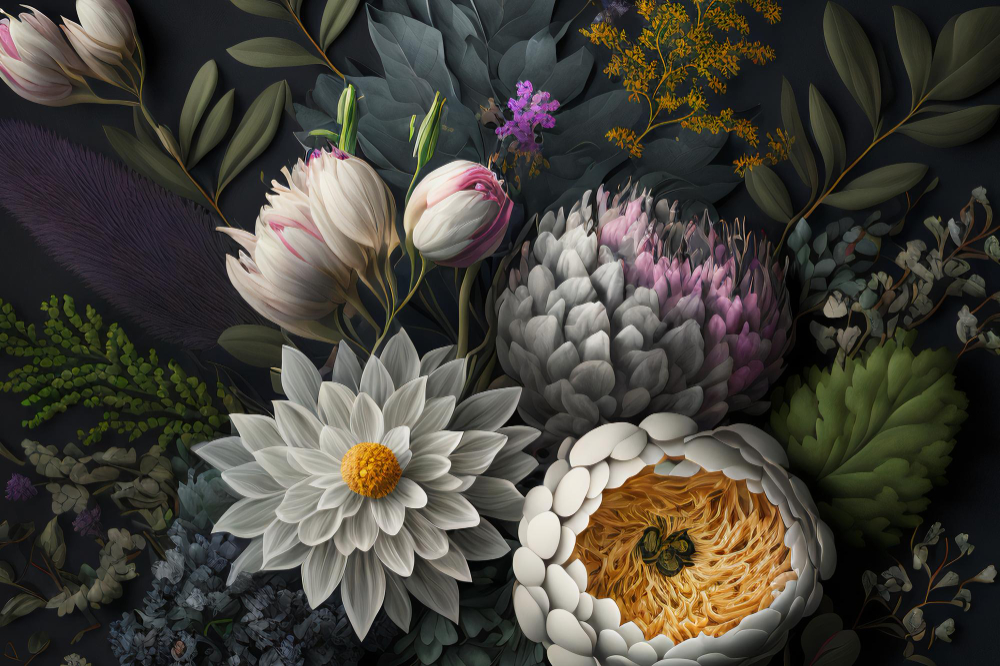If you’re tired of your old, outdated wallpaper but not ready to make the plunge and strip it all out just yet, don’t worry!
You can still give your walls a fresh look without taking on an expensive and tedious task. With the right steps, tips, and tricks under your belt, painting over existing wallpaper is possible – so why not give it a go?

In this detailed guide, we’ll discuss everything you need about painting over wallpaper for a beautiful transformation of any room in the house. Let’s get started from prepping and priming properly to finding the ideal paint type for the job.
Contents
Stage 1: Prep
Your new-look walls are just around the corner, but before you break out the paint, remember that preparation is key! The quality of your prep work directly impacts the final result, and in this case, it could be the difference between sleek, smooth walls and an unfortunate wallpaper peek-through.
Here’s the lowdown on the steps you must follow to ensure your walls are primed and ready for their makeover.
Step 1: Clean The Wallpaper
Start by cleaning the wallpaper. Over the years, dust and grime can accumulate on the wallpaper, creating a layer that could interfere with the adhesion of the paint. Use a mild detergent mixed with warm water and a soft sponge to gently clean the walls.
Rine thoroughly with clean water and let the walls dry completely before moving on to the next step.
Step 2: Scrape Off Loose Wallpaper
Loose or peeling wallpaper can cause problems, leading to unwanted texture or bubbles under your paint. Use a putty knife to scrape off any loose bits of wallpaper gently. Be careful not to dig into the wall or cause unnecessary damage.
Step 3: Apply an Oil-Based Primer
A primer creates a smooth, consistent surface for the paint to adhere to and helps prevent any patterns or colors in the wallpaper from showing through the paint. An oil-based primer is recommended for painting over wallpaper as it’s better at blocking stains than a water-based primer.
Apply a coat of the primer and let it dry according to the manufacturer’s instructions before moving to the painting stage.
Stage 2: Choosing the Supplies
Now that we’ve discussed the preparation stage, we can focus on the actual painting supplies. The paint, along with the tools you use, can significantly influence the success of your project. Carefully selecting your supplies is, therefore, crucial to achieving a smooth and long-lasting finish. Let’s walk through some steps to ensure you make the right choices.
Step 1: Select the Right Paint
When it comes to choosing paint, it’s best to opt for acrylic or latex paint. These types of paint are versatile, easy to work with, and offer good coverage, which is important when painting over wallpaper.
They also dry quickly and are water-based, making cleanup a breeze. Additionally, choosing paint with a satin or semi-gloss finish can help mask any minor imperfections in the wallpaper.
Step 2: Choose Your Painting Tools Wisely
The tools you use to apply the paint are just as important as the paint itself. A high-quality paint roller is ideal for large, flat areas, while a small, angled brush is better for edges and corners.
A paint tray is also essential for holding your paint and aiding in the even distribution of paint onto the roller or brush.
Step 3: Don’t Forget the Painter’s Tape
Painter’s tape is essential for achieving clean, sharp edges and preventing paint from getting onto unwanted areas such as baseboards, window frames, and door frames. It’s easy to apply and remove and provides a protective barrier that can be crucial in achieving a professional-looking finish.
Stage 3: Painting over the Wallpaper
Following a successful preparation and selection of your supplies, you’re ready to move on to the final stage of your wallpaper transformation – painting.
This is where your diligent preparation will pay off, and your old wallpaper will begin to disappear beneath a fresh coat of paint. Below, we’ll walk you through the steps that will bring your walls from mundane to magnificent.
Step 1: Apply a Base Coat
A base coat (or first coat) of paint is next on the agenda. Using your chosen roller or brush, apply your paint in a ‘W’ or ‘M’ pattern, filling in the areas as you go. This approach helps to ensure an even distribution of paint.
Take your time, be thorough, and remember to keep a wet edge to avoid lap marks. Allow this base coat to dry completely before moving on to the next step.
Step 2: Inspect the Walls
Once the base coat is dry, it’s time to inspect your work. Look for any imperfections that may have been missed during the prep stage. This may be minor scratches, dents, or areas where the wallpaper pattern appears.
If you find any spots that need attention, now is the time to go in with a bit of spackle or additional paint to cover them. Remember to let any touch-ups dry before moving on.
Step 3: Apply the Second Coat
After any touch-ups are dry, apply a second coat of paint following the same technique used for the base coat. This second layer will not only give a more professional finish but also ensure that any remaining wallpaper pattern or color doesn’t show through. After applying this coat, let the paint dry completely according to the manufacturer’s instructions.
Step 4: Final Touches
With the paint now dry, the final step is carefully removing the painter’s tape. If any paint has seeped under the tape, a putty knife can assist in removing it. Finally, step back and admire your fresh, new walls!
The old wallpaper design is now a thing of the past, and you can enjoy the new look of your room. Painting over wallpaper may have seemed daunting at first, but with the right tools, patience, and a can-do attitude, you’ve successfully breathed new life into your space.
Final Thoughts
Painting over wallpaper allows you to update the look of your walls without going through the hassle and cost of removing the wallpaper. By following these steps and taking your time, you can achieve a professional-looking finish that will make it hard for anyone to believe there was ever wallpaper underneath.
Preparation is key, so don’t skimp on cleaning and priming your walls. Contact a painting expert to learn more about this project and the necessary supplies.
